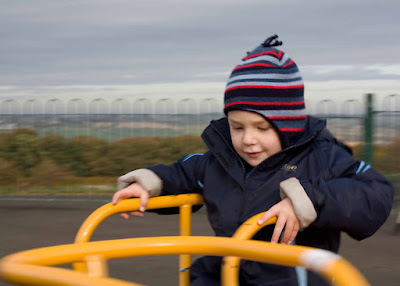
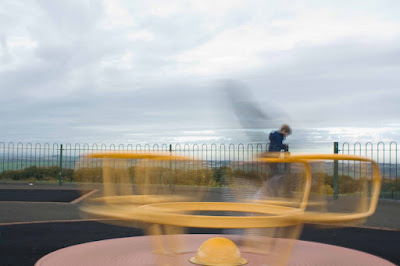
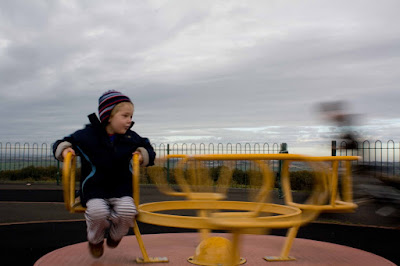
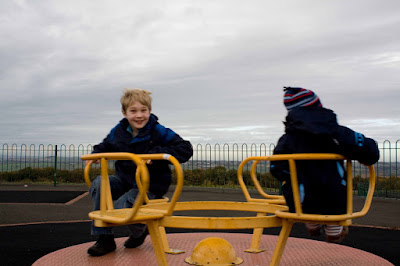
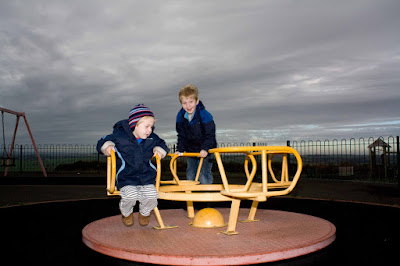
The brief for this project was to capture movement using both a slow shutter speed and the technique of panning. Although I am aware of, and understand, both techniques, I have used neither in practice, so this was a good opportunity to see if it was as easy as it looks. The only motion blur I have captured in my experience so far is the light trail effect at night.
The images shown above are panning at 1/30 second, blur at 1/s, blur at 1/8s, slight motion blur at 1/30s, and freezing motion at 1/125s.
Most photos I have seen with these techniques tend to be either bikes or cars. I decided to try with a children's roundabout in a park, using my 2 young sons as subjects. The particular park in question is situated at the top of a hill, and the view is quite spectacular, so the sky would be the requisite plain and simple background as per the brief. In hindsight, this probably wasn't the easiest subject for a first try, as it meant I had to try and spin the roundabout and then photograph it straight away. As it slows down pretty quickly, I didn't have many opportunities to practice. Also the old adage of never working with children or animals held true, as they quickly became bored and wandered off. However I think I achieved the required results. These are techniques I want to carry on practising, with trains, cars etc. so I will come back and update this post throughout the course.
The roundabout was fairly slow moving, so I was able to freeze motion at 1/125 seconds and even at 1/60 second. I would imagine that 1/60 shutter speed would demonstrate motion blur for a bike/car. At 1/30 second there was a hint of blur but unfortunately this image fell into neither camp of being sharp or displaying motion, so these were the weakest images. Once down to 1/8 second, the motion blur was very attractively displayed, whilst still maintaining some form so you could identify the subject. Another child cycled past and was captured as a blur i.e. he was moving a lot faster than the roundabout. Finally at 1 second exposure time the outline of my son on the roundabout was no longer visible, and the image was quite abstract.
I found panning much harder than it looks, but this was probably down to the subject I had chosen. However I managed to capture 2 images with the panning effect of the slightly streaked background whilst my son was sharp. One was at 1/30 second and the other at 1/15 second.
Overall I managed to obtain one image which was a favourite. This showed motion blur at 1/8 second but I could still clearly identify my son on the roundabout. I also obtained a lot of images which were a bit of a mess and had to be deleted. I intend to use my favourite image in my first assignment as I found it very interesting in it's own right with the colours and of course the dramatic sky. With regards to panning, this is something I will practice with more appropriate subjects, such as trains and bicycles.
Update as of 1 May 2010 - I finally got round to trying a panning shot with my son on his bike. As I am not really interested in cars, then I guess bikes are the one time when I may use the panning technique. As you can see, the results are not marvelous however they are getting there. The one thing that did strike me was that I should have positioned myself on the other side of the road so that they were travelling from left to right, as the other way feels uncomfortable to my eye. I guess it's an ingrained thing from learning to read left to right, but also reflects the way that we look at things anyway (apparently left to right). Anyway, the benefit of photoshop is that you can just flip them over and there you go - a more comfortable image, apart from the lack of sharpness of the main subjects that is! This image was taken at 1/30 second.











